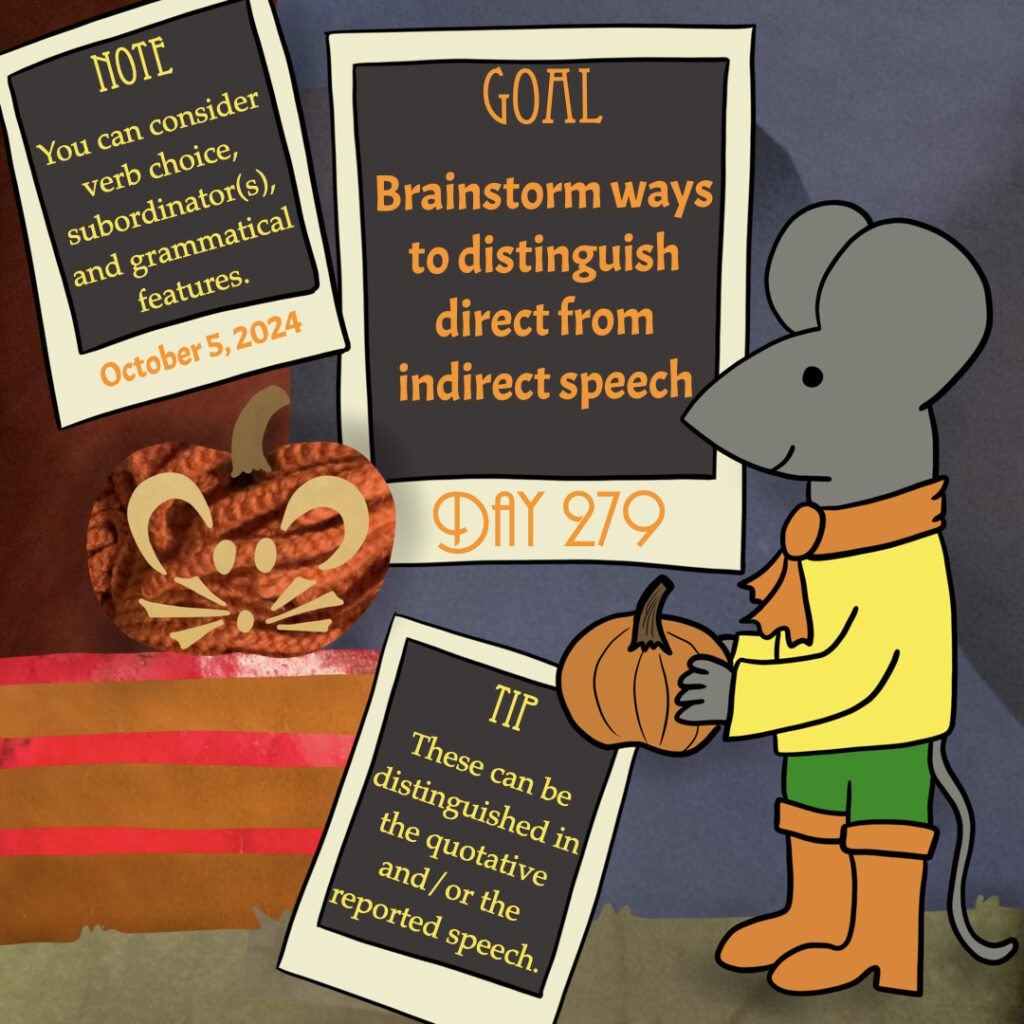
Goal: Brainstorm ways to distinguish direct from indirect speech
Note: You can consider verb choice, subordinator(s), and grammatical features.
Tip: These can be distinguished in the quotative and/or the reported speech.
Work focus: Learn/Brainstorm/Try
Today’s goal is to explore and brainstorm strategies specifically for distinguishing direct from indirect speech. One option is not to distinguish them in your conlang—reported speech is reported speech, whether it’s intended to be paraphrased or reported more verbatim-like.
Options for distinguishing direct from indirect speech are diverse and include…
- Using a particular verb (or small set of verbs) to set up indirect versus direct reported speech (e.g. a verb like quote could indicate direct speech while a verb like say could indicate indirect speech).
- Using a subordinating conjunction or introductory particle to distinguish these types of reported speech. For instance, in English that can be used to introduce indirect speech but is not used with direct speech: Korra said that she would be here but *Korra said that, “I will be here.” Using that forces an indirect speech interpretation.
- Using grammatical features in the reported speech itself to signal direct versus indirect speech, such as pronoun shifts and tense/aspect shifts.
You can use any of these options—or any combination of them—to distinguish direct from indirect speech. Spend some time brainstorming what feels best for your language (and, if needed, time exploring what other languages do to get ideas).
